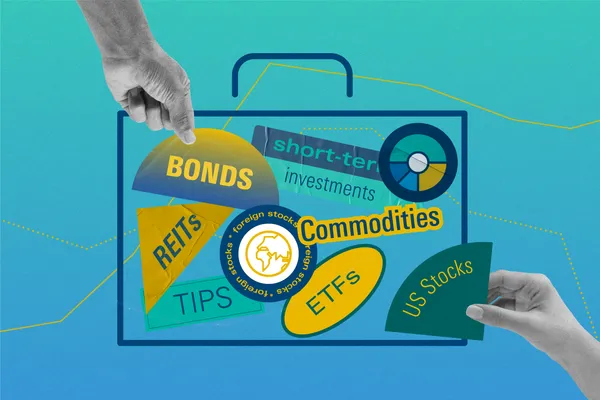What to put in, what to leave out, and answers to key questions about effectively diversifying a portfolio in 2022 and beyond.
When the U.S. stock market is rallying–as it did for much of the past two decades–portfolio diversification falls to the wayside for many investors. After all, if U.S. stocks are doing well, why go anywhere else to invest?
When U.S. stocks struggle, though, as they have this year, the portfolios of many investors struggle, too. It’s at times like these that some investors seek out different types of assets to diversify their portfolios.
The problem is, diversifying an investment portfolio shouldn’t be something an investor does only when U.S. stocks face headwinds. In fact, portfolio diversification doesn’t always work as investors might expect over brief periods of time.
“One of the cruel facts about portfolio diversification is that it may or may not pay off in any given period,” admits Morningstar portfolio strategist Amy Arnott. In fact, during periods of market stress, many asset classes drop in tandem. This year, for instance, both U.S. stocks and U.S. bonds endured losses at the same time.
Despite that, we think diversification remains one of the few “free lunches” in investing. But we also think it’s becoming more difficult to do.
In this special report, we answer some of the key questions investors have about what portfolio diversification is, how to achieve it, and why effectively diversifying an investment portfolio may be getting harder to do in the face of rising interest rates and inflation. We also share some new Morningstar research that drills down into how good particular asset classes, subasset classes, and factors have been at providing diversification to a U.S. stock portfolio.
What Is Portfolio Diversification?
The basic concept of portfolio diversification is spreading your money among a variety of different investments in an effort to improve your risk-adjusted returns.
Some would argue that simply by owning a managed product, such as a mutual fund or an exchange-traded fund, an investor already has achieved some level of diversification. And that’s true: Because mutual funds and ETFs are composed of baskets of stocks, bonds, or some combination thereof, they provide more diversification than owning a single stock or a single bond. Put another way, owning a basket of securities via a fund reduces the “per issue” risk that comes with owning just one security.
However, when most talk about portfolio diversification, what they really mean is spreading out your money not just among various individual securities, but among securities that tend to behave differently from each other. For instance, an index fund that tracks the S&P 500 is diversified in the sense that it owns many stocks, but it isn’t as diversified as something like a world-allocation fund, which owns stocks and bonds across various geographies.
What Is the Advantage of Portfolio Diversification?
Portfolio diversification is rooted in something called Modern Portfolio Theory, which is a strategy that focuses on investing in different asset classes as a way to reduce a portfolio’s overall risk while achieving the best return possible. “As Harry Markowitz first established in his landmark research in 1952, a portfolio’s risk level isn’t just the sum of its individual components but also depends on correlation, or how the holdings interact with each other,” explains Arnott.
Theoretically, by owning holdings that behave differently from one another (in investing lingo, that means finding investments that have low or negative correlations with each other) an investor can build a portfolio with risk-adjusted returns that are superior to those of its individual components.
What Should Be in a Diversified Portfolio?
A diversified portfolio often includes three primary asset classes: U.S. stocks, international stocks, and bonds. Investors will determine how much they should dedicate to each asset class based on things like their investment time horizon, investment goal or goals, and risk tolerance. Various sources–including Morningstar–provide asset-allocation benchmarks that investors can use to build an appropriate asset allocation based on their life stage.

